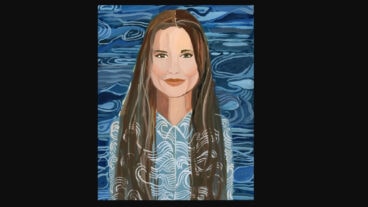I have always been intrigued by the power of light – Danny Redler in his museum.There is only one stage lighting museum in the world and it’s in Israel. The Power of Light Compulite-Danor Stage Lighting Museum (named after the curator’s two commercial companies) documents the entire technical evolution of theatrical lighting. Starting with the use of special candles during the Italian Renaissance in the 1500s, it charts the oil lamps used during the Restoration in 17th Century France and England, the Gaslight era of the 19th Century, the dawn of electric light in the 20th Century, and finally explores the contemporary use of LED (Light Emitting Diodes).
Located in Hod Hasharon, the museum has become a beacon for hundreds of elementary, high school, and university theater students, lighting and set design students, stage technicians and other production professionals, from Israel and abroad.
“I opened the museum to help educate people,” says the museum’s founder and curator Danny Redler. “It’s my way of giving something back to society.”
Redler launched the museum in 2002 after laboring for several years, collecting artifacts from friends and lighting colleagues around the world, and designing the museum’s recreations using pictures and descriptions from play books. In addition to covering the history of lighting technology, the museum features several interactive exhibits aimed at educating audiences on lighting techniques involving color, shape, intensity, and angle; and a lighting showroom, where visitors are treated to a light show, and serious students take classes to learn how to use the newest lighting technology.
But Redler, the author of Stage Lighting, published in Hebrew in 1992, and later sold worldwide in English on a CD ROM, is the first to admit that putting the museum together was a labor of love. “I didn’t just do it for others,” he told ISRAEL21c. “I did it out of my own love for lighting.”
Redler’s attraction to light began in 1964, when he was 17. Redler had just graduated from high school in his hometown of Ramat Gan, and found himself with six months off between his high school graduation and his military service with the IDF.
He took a job at a company called Steinmetz, then a small spotlight manufacturer. There, Redler spent his half year putting together lights on an assembly line. “This was the experience that got me excited about lighting; this was the trigger,” says Redler, who began studying the art of lighting.
Although he dreamed of studying theater and lighting in university, it was a luxury his family could not afford. So after he finished his army service in 1967, he returned to work at Steinmetz for several years. Finally, things came to a head. “My boss wanted me to stay more in the office, and I wanted to go out more to design the lighting for productions,” explains Redler. “It was a conflict. So I left the company.”
Redler began working as a freelance lighting designer. “In those days, they didn’t call it ‘lighting design’; they called people in the profession ‘electrical workers’,” he explains. “But even back then I realized there was much more to it than that.
“As a lighting designer you must know what was in the mind of the playwright when he wrote the play,” he says. “Lighting is built into the dialogue; at every minute of almost every play there is a connection to light. The art of the lighting designer is to analyze the script according to light. Stage lighting is a whole narrative unto itself.”
After a few months, in 1971, Redler opened his own light-building company, Danor Theater and Studio Systems Ltd., to design and build lights, and also to provide lighting for shows and events.
Four years later, when the business was up and running, Redler – then age 30 – decided to fulfill his lifelong dream of studying theater and enrolled in a BA program at Tel Aviv University (TAU).
“It was very tough to be in school while I was running the company,” he says, explaining that he went to school in the morning, and then ran to the office in the afternoon. “But I loved every minute of it”.
After four years of study, Redler came up with the idea for his second big venture. “Whenever I lit a show for Danor, I felt I was missing something,” he says, explaining that he wanted more control, flexibility, and precision over the lights, which were growing in number, and required a more streamlined communication system.
At this point, stage lighting computers were relatively unsophisticated. In addition to using large manual switchboards, they were timer-based which meant the lighting designer could not work according to the tempo of the action on stage. There was only one company, Verilite, that had a computer to control moving lights, and it was only willing to rent the technology, not sell it. As a result, most lighting designers simply improvised.
Redler approached British lighting console company Strand Electric, which had developed a technology that semi-computerized stage lighting (though it still involved the use of a team of technicians to operate a huge board of manual switches). The owner told him he was too young, and kicked him out. “So I started my own (second) company,” recalls Redler.
In 1978, Compulite was born, along with the world’s first fully computerized microprocessor-based lighting console system – designed to Redler’s specifications. “We were the first to fully automate the process of lighting,” he says.
“When Compulite came to the market it was my approach against the British and the American approaches,” says Redler. “Nowadays all the systems conform to our system. Compulite has become the standard.”
To this day, industry experts consider Compulite to be a very flexible company with very flexible systems. The four versions of the newest ‘Vector’ console (which range in price from $7-30,000) can control an increasing number of channels, include many more features, and are more open to upgrades than competing systems. This helps explain why 92% of sales are to markets abroad. Among the list of users: the lighting crews of Madonna, Michael Jackson, and Paul McCartney.
Danor has also expanded and evolved over the last 35 years into a lighting empire that employs more than 100 people at six subsidiaries. These range from providing lighting for theater and fashion shows, to providing video, audio, scent machines, smoke machines, and lighting for multimedia installations.
The latest addition to the Danor family of companies is D-LED, an LED company that produces and distributes a unique variety of LED controllers, fixtures and designs for restaurants, pubs, hotels, shopping malls, and TV studios worldwide. D-LED is set to become an independent entity in a matter of months.
“This is the future of lighting,” Redler enthuses. “This is a real revolution.” Not only do LED lights conserve energy, but LED lights last a lifetime (or about 50,000 hours). These are both reasons why LEDs, currently used in homes, offices, pubs and restaurants, are more environmentally sound.
“LED lights have been around since the ’60s, but it was only a few years ago that we really started to discover their potential,” says Redler. “LED is a totally different story; you can do things with LED that you cannot do with other kinds of lighting.”
Redler, who recently sold his first script, Too Much Sushi, to the Cameri Theater in Tel Aviv, says it’s only a matter of time before LEDs are used in the theater. Today, theaters still prefer conventional electrical lights, a hesitancy to move forward that reminds him of the switch from gaslights to electricity. Even 20 years after electricity was invented, theaters continued to use gas-based lighting instruments on stage. “History is repeating itself,” he says. “Eventually LED will push out electric lights – even in theaters.”
So why does lighting have such an attraction for Redler? It’s the impact it has on people, says Redler, both in theater and in daily life. “The influence of light on people cannot be underestimated,” he explains.
Offstage, lighting plays a bigger role than most people tend to realize. For example, if you sit for several hours in a meeting room with a florescent light, it will make you tired. The flickering, which you don’t notice consciously because it happens so quickly that your eye perceives it as a continuum, is exhausting.
In a play, says Redler: “Light gives meaning, and can change the whole mood… in a second.”
As you come to the close of a tour of Redler’s Stage Lighting Museum, there is a backlit plaque, inscribed with a quote from Ingmar Bergman in The Magic Lantern.
“When I came to this paragraph I thought wow – this really summarizes the museum perfectly,” says Redler. He reads aloud: “It is perhaps because we are both utterly captivated by the problems of light, the gentle, dangerous, dreamlike, living, dead, clear, misty, hot, violent, bare, sudden, dark, spring-like, falling, straight, slanting, sensual, subdued, limiting, poisonous, calming, pale – light.
“I have always been intrigued by the power of light,” he says simply.












